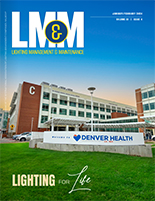More than 5,500 Lighting-Designer Listings Make Up National Lighting Bureau’s “Lighting-Designer Directory”; New Expansion into Canada
Shepherdstown, WV: The National Lighting Bureau’s “Lighting-Designer Directory” comprises more than 5,500 listings covering all U.S. states and, now, the Bureau is expanding the Directory to cover all of Canada’s provinces. According to Bureau Executive Director John Bachner, “We encourage all qualified lighting designers to register; there’s no charge to do so. Our mission is to give those who want high-quality lighting design ready access to those who can provide it. For many years, the lighting in and around homes, offices, factories, and other buildings often has been designed by amateurs; people who may know a little about lighting, but not nearly enough to permit a system’s owners and users to derive the full range of benefits available from well-designed lighting; what the Bureau calls High-Benefit Lighting®.”
According to Bachner, “High-Benefit Lighting succeeds because professionals design it to meet the visual needs of the people in a space, given the visual tasks they perform. In commercial, industrial, and other settings where the focus is getting work done, safety and productivity are key concerns. Lighting is essential to safety, because it can call people’s attention to risks created by the equipment in use or frequent dangerous conditions, like wet floors. And insofar as
productivity is concerned, lighting has long been regarded as a major influencer.” Bachner said that workers who are paid $20 per hour and receive “modest benefits” can each save their employer $1,000 per year when they’re able to increase their productivity by just 2%; in other words, by saving just 72 seconds per hour. “Assuming that one is replacing an older lighting system with a newer one – like specifying a light-emitting diode (LED) lighting and control system to replace a fluorescent system – a 72-seconds-per-hour savings could be achieved easily, providing the new system is professionally designed, installed, and maintained, so workers can see faster and clearer while making fewer errors.”
Productivity is not usually a concern in residential settings, Bachner continued, but aesthetics, security, and safety – both indoor and outdoor – commonly are. And here, again, LED lighting and controls are important factors, because of their unparalleled capability and versatility, complemented by outstanding energy efficiency and long life. But no matter what the setting, even the highest-quality LED lighting matched to the best controls available cannot in and of themselves achieve the desired outcomes when qualified lighting designers are not consulted, Bachner said. He commented, “Effective lighting designers can use light the way artists use paint. They learn about the effects that are wanted, and then they design a lighting system that will achieve them. Given the impact of what lighting can do, it’s foolhardy to entrust the outcome of a system to someone whose profession is something other than lighting-system design.”
How does one know who is and is not an effective designer? One way is to read the Bureau’s guidance document, “How to Select a Lighting Designer.” As it states, “Retaining a capable lighting designer is essential to the success of any lighting project… The National Lighting Bureau (NLB) suggests that you identify five or more candidate designers and ask each to furnish a statement of qualifications and experience. The furnished material should include information about commissions for which the designer has been engaged, with an emphasis on those that are similar to the project you’re involved with. Contact representatives of the clients involved. Ask them about the designer’s performance; e.g., the individual’s or firm’s ability to work with client representatives in establishing an effective scope of service, ability to fulfill the scope, reasonableness of the fee, the designer’s ability to deliver on time, and, of course, the
effectiveness of the designer’s services.”
The Bureau urges lighting designers who are based in Canada or who can provide services there to list themselves in the Bureau’s directory.
The National Lighting Bureau is an independent, IRS-recognized 501(c)(3) educational foundation that has served as a trusted lighting-information source since 1976. The Bureau is able to provide its services to the public free of charge because of the generous funding of the organization’s sponsors: professional societies, trade associations, labor unions, manufacturers, service providers, and agencies of the U.S. government, including:
- BIOS Lighting;
- Current, Powered by GE;
- Forest Lighting;
- Illuminating Engineering Society (IES);
- Imperial Lighting Maintenance Company;
- interNational Association of Lighting Management Companies (NALMCO);
- International Brotherhood of Electrical Workers (IBEW);
- Lighting Controls Association (LCA);
- LumenOptix;
- Lutron Electronics Company, Inc.;
- Luxtech;
- National Electrical Contractors Association (NECA);
- National Electrical Manufacturers Association (NEMA);
- OSRAM;
- S. General Services Administration; and
- ZLED Lighting.
Obtain more information about the Bureau by visiting its website (https://www.nlb.org/) or by contacting its staff at [email protected]. Information about sponsorship also is available there.



